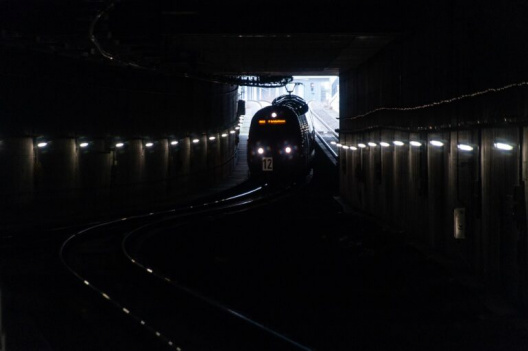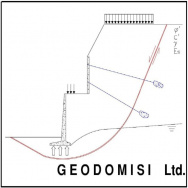The Role of Tunnels in the Future of Transportation: A Look at Emerging Technologies
[edit] The importance of tunnels and tunnelling
As we continue to develop and expand our transportation networks, the role of tunnels becomes increasingly important. Tunnelling has been a critical aspect of transportation infrastructure for many years, allowing us to build roads, rail lines, and other transportation systems through challenging terrain. However, as technology advances, new opportunities and challenges arise in the field of tunnelling. In this article, I will explore the role of tunnels in transportation, the emerging technologies that are changing the industry, and the challenges and opportunities that lie ahead.
[edit] Introduction to tunnels and tunnelling
Tunnelling is the process of excavating underground passages for various purposes, including transportation, mining, and construction. The technique has been used for centuries, with some of the earliest tunnels dating back to ancient Rome. In modern times, tunnelling technology has advanced significantly, allowing us to build tunnels through even the most challenging environments.
Tunnelling is a complex process that requires careful planning, design, and execution. It involves a range of disciplines, including geotechnical engineering, rock mechanics, and materials science. Tunnelling projects can take years to complete and require significant investment, but they can provide a range of benefits, including improved transportation infrastructure, reduced traffic congestion, and increased safety.
[edit] The Role of tunnels in transportation
Tunnels play a critical role in transportation infrastructure, allowing us to build roads, rail lines, and other transportation systems through challenging terrain. They can provide a range of benefits, including improved mobility, reduced congestion, and increased safety. Tunnels can also be used to connect different parts of a city and provide access to areas that are difficult to reach by other means.
One of the key advantages of tunnels in transportation is that they can be built underground, reducing the impact on the environment and local communities. They can also be used to bypass obstacles such as rivers, mountains, and other natural features, allowing for more direct and efficient transportation routes. Tunnels can also be used to reduce noise pollution and improve air quality, which can have significant benefits for urban areas.
[edit] Emerging technologies in tunnelling
Tunnelling technology is constantly evolving, with new techniques and equipment being developed to improve the efficiency and safety of the process. One of the emerging technologies in tunnelling is the use of autonomous vehicles for tunnel excavation. These vehicles can be controlled remotely, reducing the need for human workers in hazardous environments.
Another emerging technology in tunnelling is the use of 3D printing to create tunnel segments. This technique allows for greater precision and efficiency in the construction process, reducing waste and speeding up construction times. Other emerging technologies in tunnelling include the use of robotics and drones for inspection and maintenance, and the development of new materials for tunnel linings and support structures.
[edit] Geotechnical engineering in tunnelling
Geotechnical engineering is a critical discipline in tunnelling, as it involves the study of soil and rock mechanics to ensure the stability and safety of a tunnel. Geotechnical engineers use a range of techniques to analyse the soil and rock conditions, including borehole drilling, seismic surveys, and laboratory testing.
One of the key challenges in geotechnical engineering for tunnelling is dealing with unpredictable ground conditions. Soil and rock conditions can vary significantly over the course of a tunnel, and unexpected conditions can lead to delays, cost overruns, and safety issues. Geotechnical engineers must work closely with other disciplines, such as rock mechanics and materials science, to develop solutions to these challenges.
[edit] Rock mechanics in tunnelling
Rock mechanics is another critical discipline in tunnelling, as it involves the study of how rocks behave under stress and pressure. Tunnelling through rock can be particularly challenging, as different types of rock have different properties and behaviours. Rock mechanics engineers use a range of techniques to analyse the rock conditions, including borehole drilling, laboratory testing, and computer modelling.
One of the key challenges in rock mechanics for tunnelling is dealing with rock support and stabilisation. As a tunnel is excavated, the rock around it is subjected to stress and pressure, which can cause instability and collapse. Rock mechanics engineers must design support structures, such as bolts, meshes, and shotcrete, to stabilise the rock and ensure the safety of the tunnel.
[edit] Advantages of tunnelling
Tunnelling can provide a range of benefits for transportation infrastructure, including:
- Improved mobility and connectivity
- Reduced traffic congestion and pollution
- Increased safety for drivers and pedestrians
- Reduced impact on the environment and local communities
- Access to areas that are difficult to reach by other means
[edit] Disadvantages of tunnelling
While tunnelling can provide significant benefits, it also has some disadvantages, including:
- High costs and long construction times
- Potential for unexpected ground conditions and cost overruns
- Safety risks for workers and the public
- Disruption to local communities during construction
- Limited flexibility in route planning
[edit] Case studies of successful tunnelling projects
There are many examples of successful tunnelling projects around the world, including:
- The Channel Tunnel, which connects England and France and is one of the longest underwater tunnels in the world.
- The Alaskan Way Viaduct Replacement Tunnel, which replaced an aging elevated highway with a new underground tunnel in Seattle, Washington.
- The Gotthard Base Tunnel, which is the longest railway tunnel in the world and connects Switzerland and Italy.
These projects demonstrate the potential benefits of tunnelling for transportation infrastructure, including improved connectivity and reduced environmental impact.
[edit] Future of tunnelling and transportation
The future of tunnelling and transportation is likely to be shaped by emerging technologies, such as autonomous vehicles, 3D printing, and robotics. These technologies have the potential to improve the efficiency and safety of tunnelling projects, reducing costs and construction times.
However, there are also significant challenges that must be addressed, including the unpredictable nature of ground conditions and the high costs of tunnelling projects. As such, the future of tunnelling and transportation is likely to be a balance between new technologies and traditional techniques, with a focus on sustainability, safety, and efficiency.
[edit] Conclusion
In conclusion, tunnelling plays a critical role in transportation infrastructure, allowing us to build roads, rail lines, and other systems through challenging terrain. Emerging technologies such as autonomous vehicles, 3D printing, and robotics are likely to shape the future of tunnelling, improving efficiency and safety. However, significant challenges remain, including the unpredictable nature of ground conditions and the high costs of tunnelling projects. As we continue to develop and expand our transportation networks, the role of tunnels will remain critical, and it is essential that we continue to innovate and improve the tunnelling process.
[edit] Related articles on Designing Buildings
- At grade.
- Adit.
- Caisson.
- Catacomb.
- Cut-and-cover tunnel.
- Excavating plant.
- Excavation.
- Groundworks.
- Ground conditions.
- Grouting in civil engineering.
- Railway engineering.
- Road construction.
- Sewer construction.
- Trenchless pipe rehabilitation market.
- Trench support.
- Trenchless pipe relining market.
- Trenchless technology.
- Tunnelling.
- Tunnels of the world.
- Underpass construction.
Featured articles and news
Grenfell debarment investigations paused
By request of CPS to safeguard integrity of criminal proceedings. The community reacts.
Delivering for tenants; National Retrofit Hub
New report offers recommendations to strengthen energy efficiency standards to protect private renters.
Government consultations for the summer of 2025
A year of Labour, past and present consultations on the environment, the built environment, training and tax.
CMA competitiveness probe of major housing developers
100 million affordable housing contributions committed with further consultation published.
Homes England supports Greencore Homes
42 new build affordable sustainable homes in Oxfordshire.
Zero carbon social housing: unlocking brownfield potential
Seven ZEDpod strategies for brownfield housing success.
CIOB report; a blueprint for SDGs and the built environment
Pairing the Sustainable Development Goals with projects.
Types, tests, standards and fires relating to external cladding
Brief descriptions with an extensive list of fires for review.
Latest Build UK Building Safety Regime explainer published
Key elements in one short, now updated document.
UKGBC launch the UK Climate Resilience Roadmap
First guidance of its kind on direct climate impacts for the built environment and how it can adapt.
CLC Health, Safety and Wellbeing Strategy 2025
Launched by the Minister for Industry to look at fatalities on site, improving mental health and other issues.
One of the most impressive Victorian architects. Book review.
Common Assessment Standard now with building safety
New CAS update now includes mandatory building safety questions.
RTPI leader to become new CIOB Chief Executive Officer
Dr Victoria Hills MRTPI, FICE to take over after Caroline Gumble’s departure.
Social and affordable housing, a long term plan for delivery
The “Delivering a Decade of Renewal for Social and Affordable Housing” strategy sets out future path.
A change to adoptive architecture
Effects of global weather warming on architectural detailing, material choice and human interaction.
The proposed publicly owned and backed subsidiary of Homes England, to facilitate new homes.
How big is the problem and what can we do to mitigate the effects?
Overheating guidance and tools for building designers
A number of cool guides to help with the heat.
The UK's Modern Industrial Strategy: A 10 year plan
Previous consultation criticism, current key elements and general support with some persisting reservations.
Building Safety Regulator reforms
New roles, new staff and a new fast track service pave the way for a single construction regulator.






























